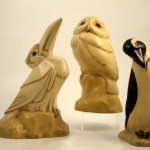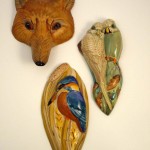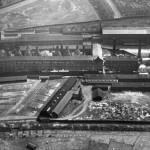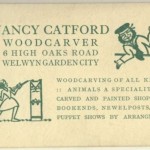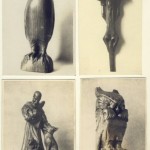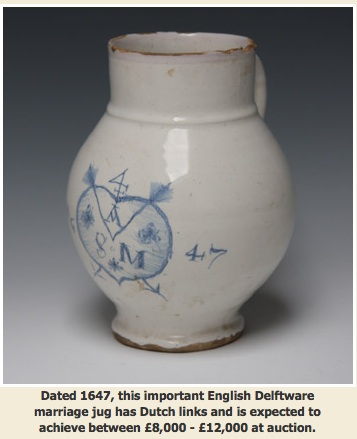Nancy, as she was universally known, attended Sidcot School, Somerset, as a boarder where her lifelong interest in art began. After experimenting herself she learned woodcarving from Mr Parker at Letchworth, subsequently attending the School of Woodcarving in South Kensington. In the 1930s she moved to the Staffordshire Potteries where she designed a range of pottery, including toby jugs for Enoch Wedgwood. She also wrote and illustrated a series of six books for children.
Early in the war her Quaker background led her to join the Friends’ Relief Service which involved travelling to refugee camps in Hungary. She then worked for the Nursery School Association, when she demonstrated and wrote about the making of simple toys. In the 1950s she was a regular contributor of illustrated articles to the Daily Mail Annual.
In 1953 she married Jack Stone and worked with him on various projects, notably the renovation of Portsmouth Guildhall. She continued working independently after his death in 1979. An active member of the Society of Wildlife Artists, she loved wildlife and throughout her life specialised in drawing and carving animals and birds. (Information kindly supplied by nephew John Capper)
In a letter dated 22nd July 1980, Mrs Stone recalled her first contact with Gray’s Pottery:
“I was exhibiting wood carvings at Glasgow’s McLellan Galleries (in 1933 or 34) and with typical enthusiasm for new ideas, AE (Gray) thought that pottery animals similar to my carved ones, in the material he was experimenting with, would make a good combination. I think that they could have developed quite a lot, but unfortunately for that particular firm, I got really interested in modelling (of) which I had done very little before 1935, and I decided I would move to the Potteries and freelance, while continuing my carving at the same time. As I learned later, Mr Gray really wanted an exclusive modeller and not a general freelance. For me it was a very good development and I did a lot of work, mostly birds and animals for a number of firms, until the war diverted my activities elsewhere.”
DESIGNS
Free standing animal studies and various wall-mounted sculptured masks and animals. These products were made in a buff-coloured earthenware, somewhat like a stoneware body, possibly by Winkle & Co at the Colonial Works in Stoke (on the opposite side of the Trent & Mersey Canal from the Gray’s works. They were unique to Gray’s Pottery and were a departure from the firm’s typical products. In March 1935 the Pottery and Glass Record referred to ‘the life-like eyes in the animals’ and to ‘nut-holders’ and ‘bird-baths’ in a report on the Gray’s stand at the British Industries Fair.
Credits:


